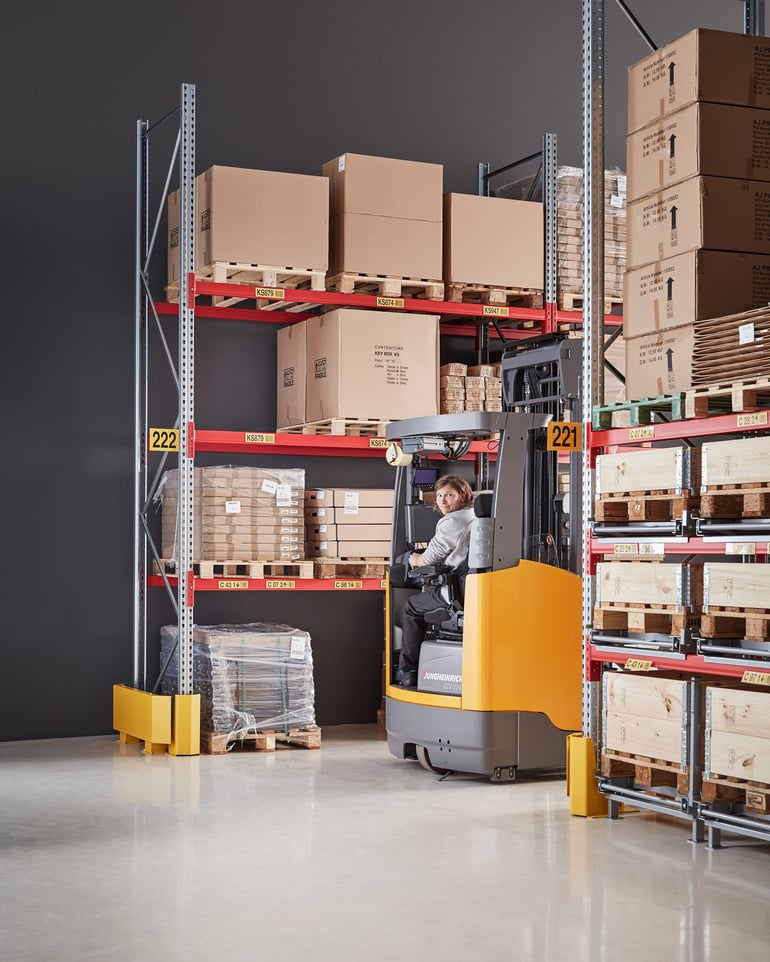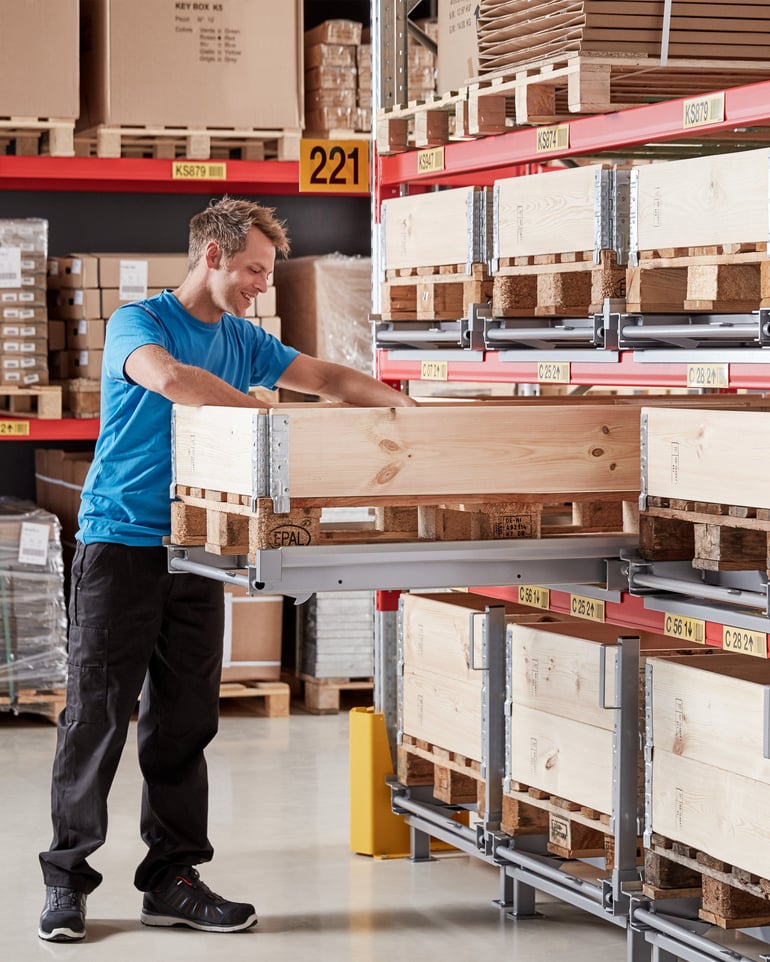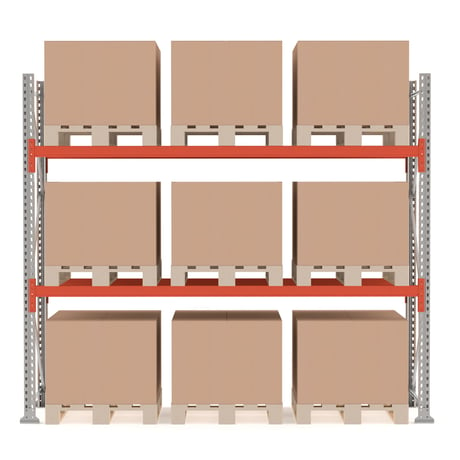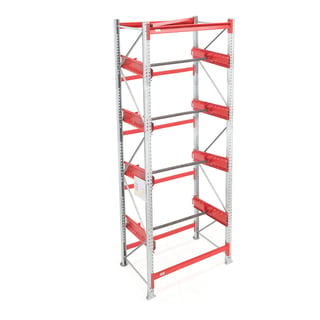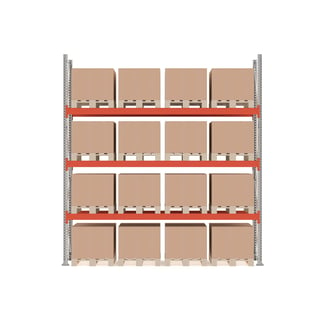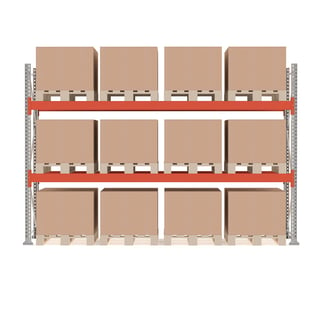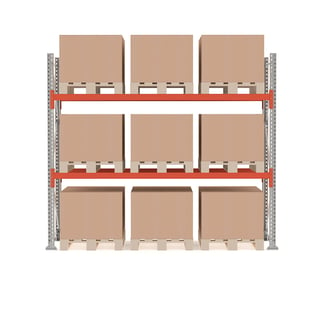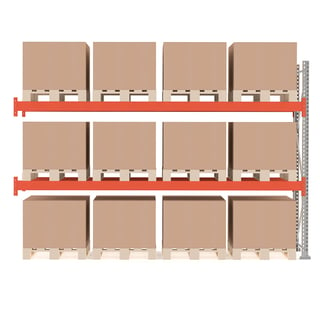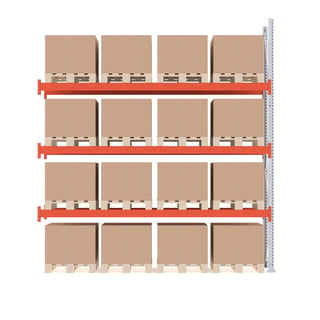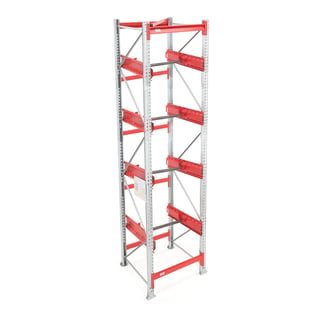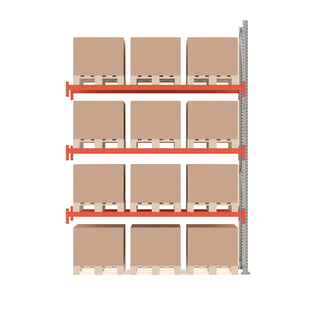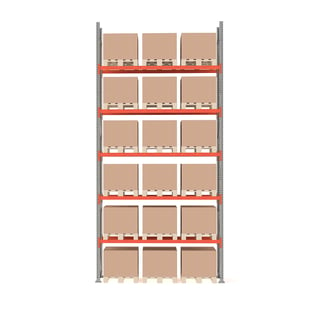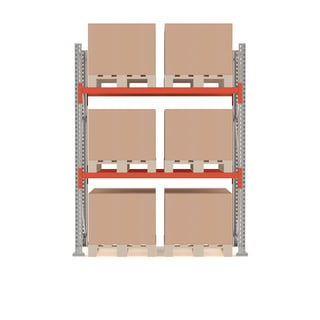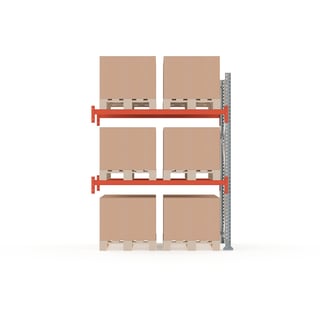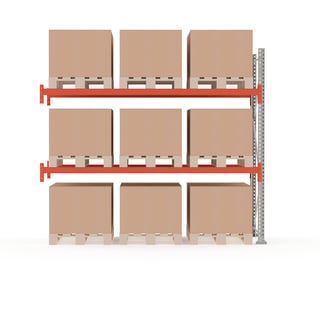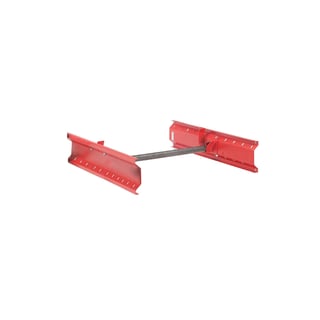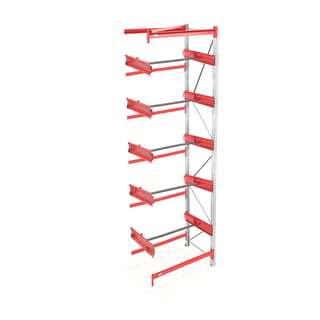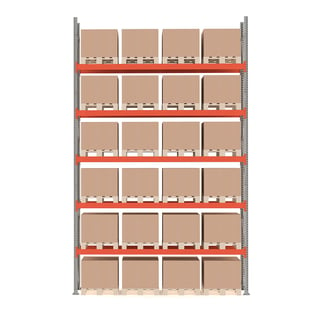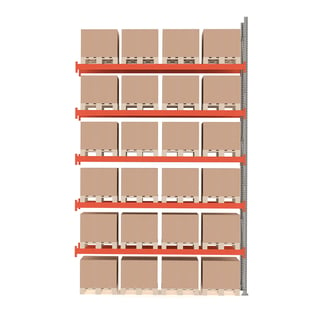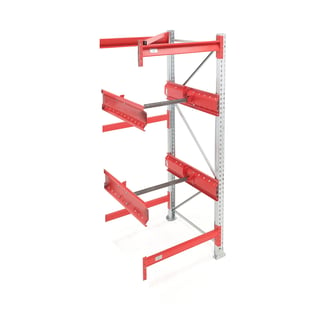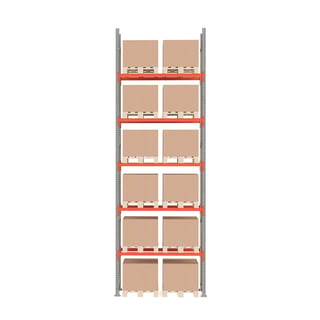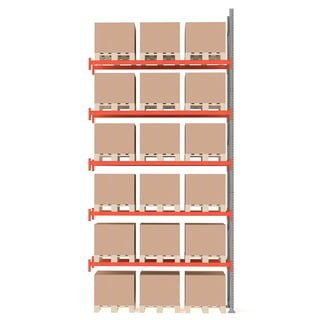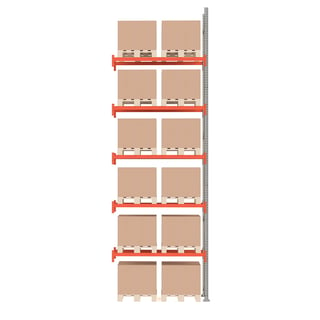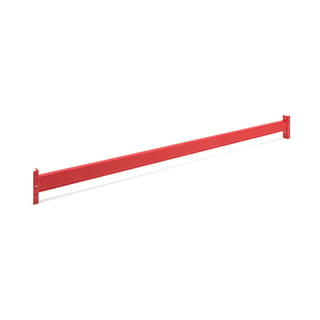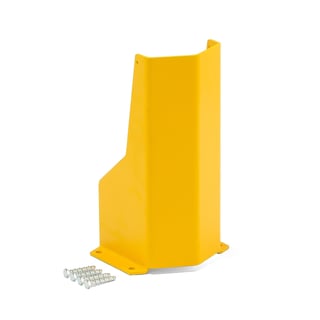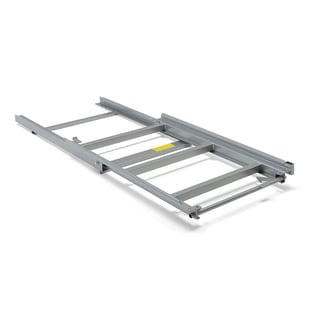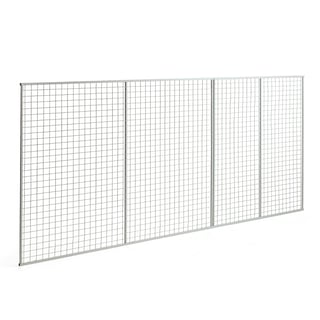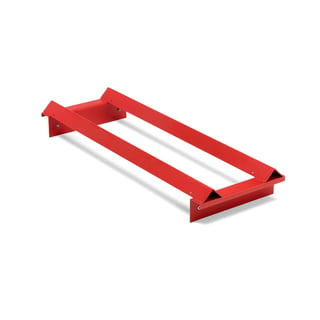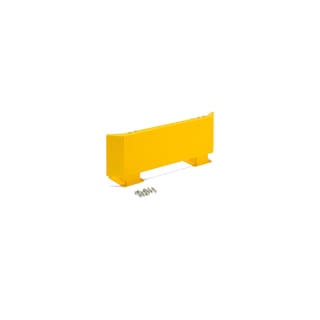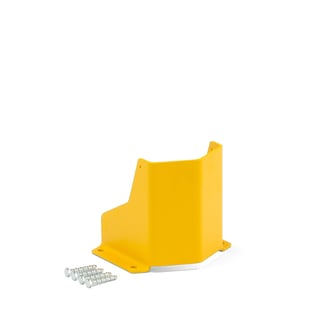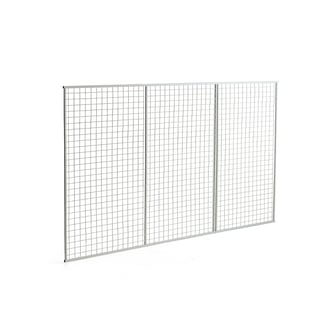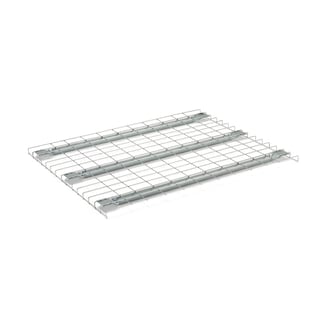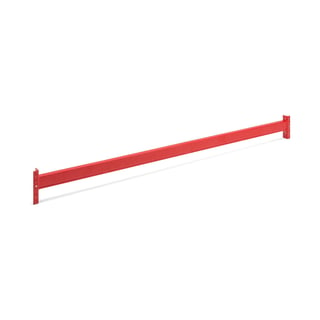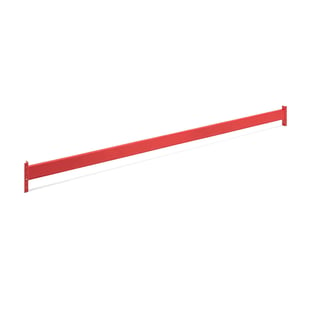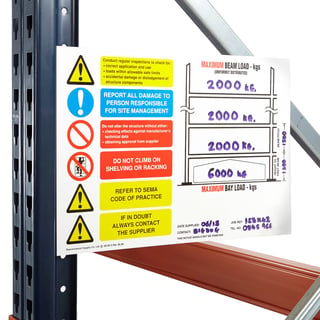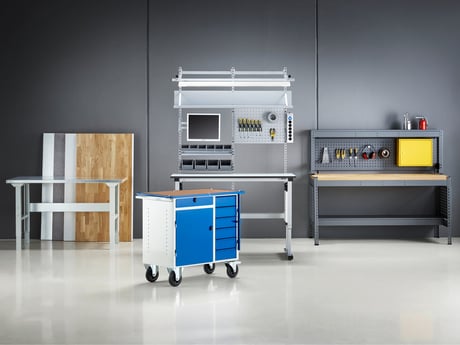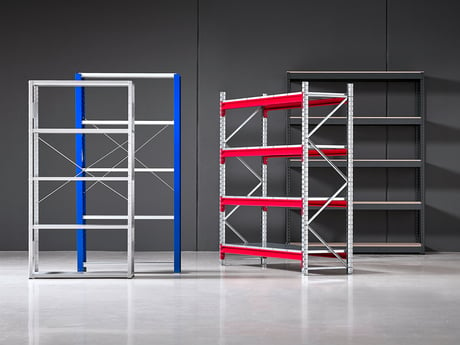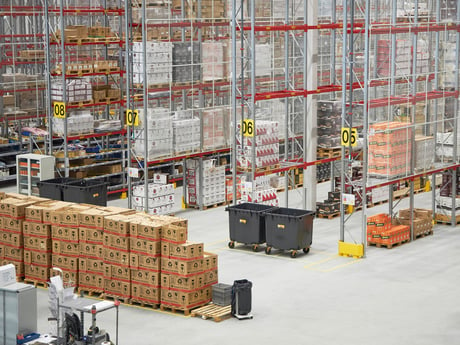- AJ Products UK
- Blog: Tips to Inspire Happiness at Work
- Buying guides
- Choose the right pallet rack
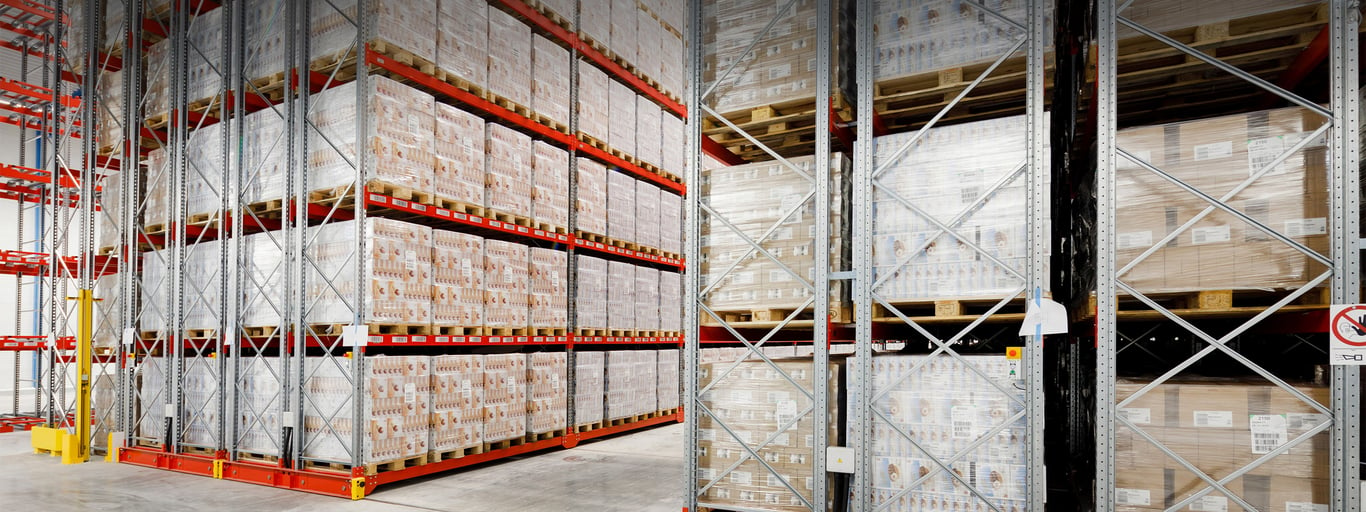
How to choose the right pallet rack for your warehouse
Create an optimal work flow
Furthermore, conduct a thorough analysis of your product assortment. Identify fast-selling items and those with lower turnover to strategically position high-demand products in easily accessible areas, minimising travel distance within the warehouse. Ensure adequate space for safe transportation using forklifts, pallet jacks, and pallet trolleys.
The weight and size of the goods
When it comes to the weight and size of your goods, safety is paramount.
Ensure that pallet racks never bear more weight than they're designed for, as indicated by loading signs specifying the permissible load per rack section.
Additionally, for items like half pallets, attach extra half-pallet inserts to the supporting beams to accommodate them securely and maintain stability.
Maximise inventory volume
Double Racking: Consider utilising double racks, where two pallet racks are positioned back-to-back, eliminating the need for aisles between them and saving valuable space.
Innovative Solutions: Explore the use of mobile pallet racks and pushback systems in large logistics warehouses to streamline warehouse processes and optimise space usage.
Long-Term Planning: Plan by constructing a warehouse design that minimises the need for frequent alterations. Alternatively, build a foundation that allows for expansion as storage needs evolve, with the flexibility to add more sections as required.
Expert Assistance: Contact our project sales team to ensure the successful implementation of your new warehouse solution, tailored to your specific needs and objectives.
Optimise your warehouse with the help of our experts
Utilise the potential of pallet racks
Cable Reel Racking is adapted for storage, handling and suspension of cable reels.
Drum Cradles used for safe storage and handling of drums/barrels.
Roll Holders can be used for cylindrical goods such as pipes, carpets etc
With Long Side Inserts it's possible to store pallets handled on the long side.
Pull Out Units mounted directly on to the support beams of the racking facilitate the handling of goods. Pull out the unit to easily access the contents of the pallet.
Mount a tool board between the ends of the pallet rack and you can always have useful tools close at hand.
Suspension for waste bins can be mounted on the end of the pallet rack so you don't have to have them standing on the floor.
A practical divider allows you to store slabs such as stone or glass, standing in the pallet rack.
Security in the warehouse
Creating a safe workplace environment is essential, and this starts with meticulous planning of the warehouse layout to prevent accidents. To achieve this, it's important to concentrate manual picking activities in specific areas, reducing the risk of potential hazards. Additionally, minimising forklift traffic in pedestrian zones is vital to enhance safety for all workers. Clearly designating forklift routes and pedestrian walkways not only facilitates smooth navigation but also ensures clear separation between people and machinery.
Minimize risks with warehouse safety equipment:
- Collision protection, such as post and gable guards, helps protect pallet racking from forklift impacts.
- Anti-collapse mesh panels, mounted to the rear of racking systems, prevent items from falling into walkways.
- Pallet stops prevent pallets from being pushed too far and tipping off the racking.
- Pallet holders keep stacked pallets stable and securely in place.
Identifying and addressing blind spots or poorly lit areas within the warehouse premises are crucial steps in effectively managing potential hazards. By prioritising safety measures such as these, you not only safeguard your employees but also support smoother operations, reduced downtime, and improved long-term productivity.
TIP! The ultimate pallet rack
ULTIMATE has a unique construction that makes pallet racking work just as well in the small warehouse as in a larger facility. ULTIMATE is a comprehensive pallet rack system and is also the only pallet rack in AJ Products range.- Can be supplemented with many different accessories
- Easy to change and rebuild when needs change
- Space-saving construction
Ask us about pallet racks!
If you need help planning your warehouse, please contact us. Our project sales team have a wealth knowledge of warehouse optimisation and are happy to help you!ULTIMATE Pallet Rack - Basic sections and add-on sections
Accessories for ULTIMATE pallet racks
FAQ
- The EUR-pallet measures 800 × 1,200 mm and is 144 mm high.
- A half pallet usually measures 800x600 mm, making it half the size of a standard EUR-pallet.
- Single-use pallets are generally not recommended for use in pallet racking systems. Instead, to avoid the need for repacking goods, items on single-use pallets can be placed on top of a standard EUR-pallet or a pallet insert.
- The counterbalance forklift is widely regarded as the most common type in warehouse operations.
- Pallet racks should be clearly marked with signs indicating the maximum load capacity per section and load level. If the weight limits are consistent throughout the rack, signs on the end frames suffice.
- Storing goods in pallet racks allows for efficient utilisation of warehouse space and ensures easy access to stored items while promoting a safe working environment.
- Free stacking involves placing palletised goods directly on the warehouse floor and stacking them vertically on top of each other.
- Deep stacking refers to the practice of stacking palletised goods behind each other without aisles in between, maximising space utilisation. Pallets are arranged according to the FILO principle – First-In, Last-Out.
- Pallet rack, pallet racking system, and rack are different names for the same thing – a rack for storage of pallets with goods.
Get the latest product launches and offers sent direct to your inbox
Do you want to receive exclusive offers, information about new products and inspiration on how you can improve your workplace? Sign up for our free newsletter and be the first to receive our best offers.*By clicking subscribe, I confirm that I have read the privacy policy.
